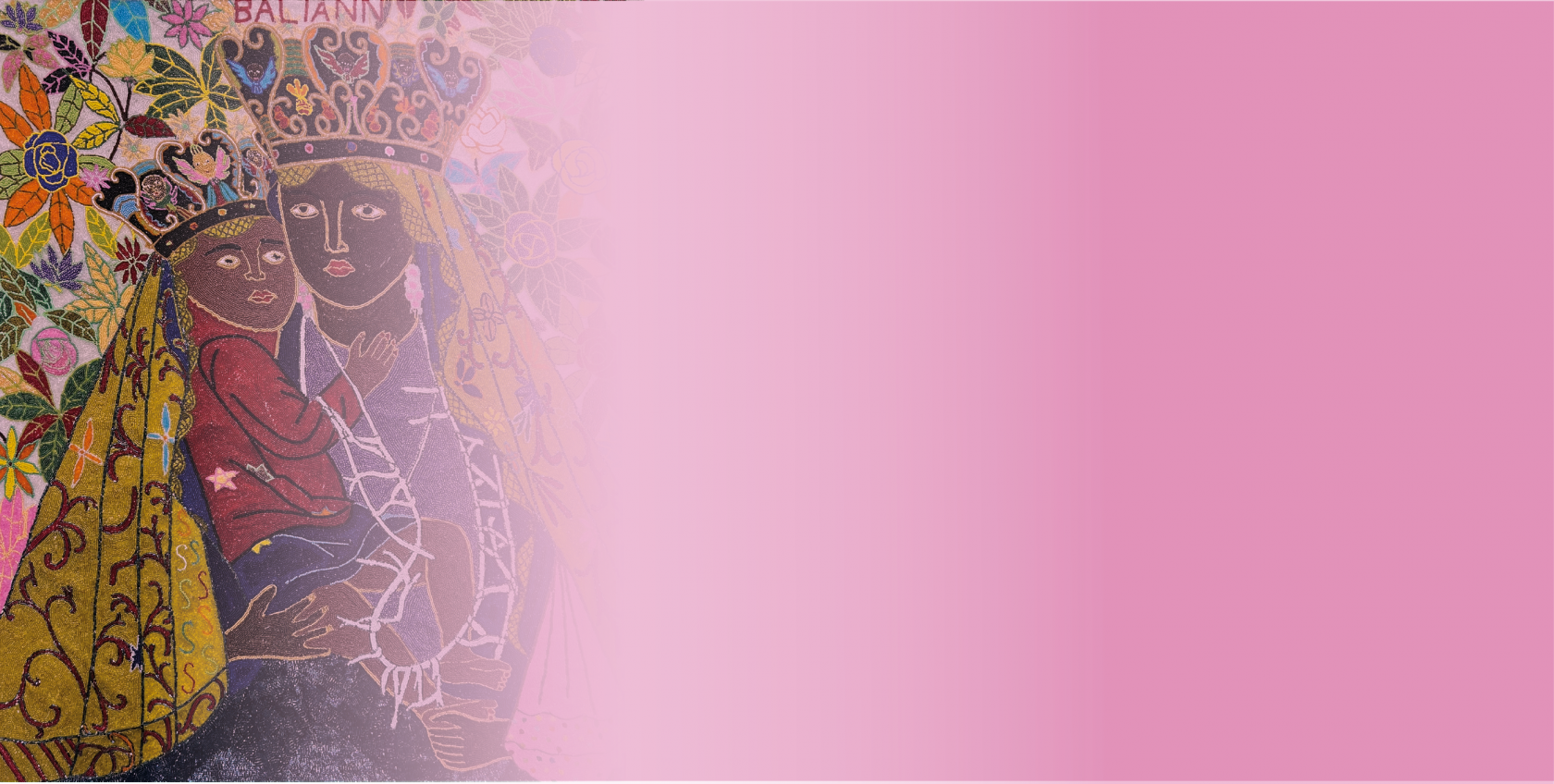
Vodou: History and Cultural Significance
Vodou is a syncretic religion with African and Catholic roots that is widely practiced in Haiti. Like Santeria in Cuba and Candomblé in Brazil, Vodou developed under colonialism between the 16th and 19th centuries and combines the beliefs and rituals of West African origin with Catholic elements. In Haiti, it's common for people to practice Vodou and Catholicism side by side. Many Vodou practitioners consider themselves good Christians, finding no contradiction between their Catholic faith and membership in a Vodou family and community. Often misrepresented and vilified in Western media, Vodou is, in fact, a democratic, life-affirming, and functional religion that promotes a sense of belonging and solidarity among its followers. Like members of other faiths, Vodou practitioners believe in creating social harmony and cultivating values such as justice, goodwill, kindness, patience, forgiveness, cooperation, and mutual respect.
Vodou ceremonies, marked by vibrant music, dance, and rituals, serve as communal gatherings where individuals connect with their ancestors, seek guidance from the spirits, and participate in a shared cultural experience that fosters a sense of connection and inclusion. Many Vodou gatherings take place in a peristil—the main shelter where the ceremonies and dances occur. At the center of the peristil is the poto mitan (center post), which is decorated in vibrant colors. The post is not only the center of ritual dance, but also the path taken by the spirits.
Vodou and Art
Vodou's cultural importance extends beyond religious rituals and has become a major influence on Haitian art, music, and folklore. It permeates every aspect of daily life and contributes to the rich tapestry of Haiti's cultural heritage, including its art.
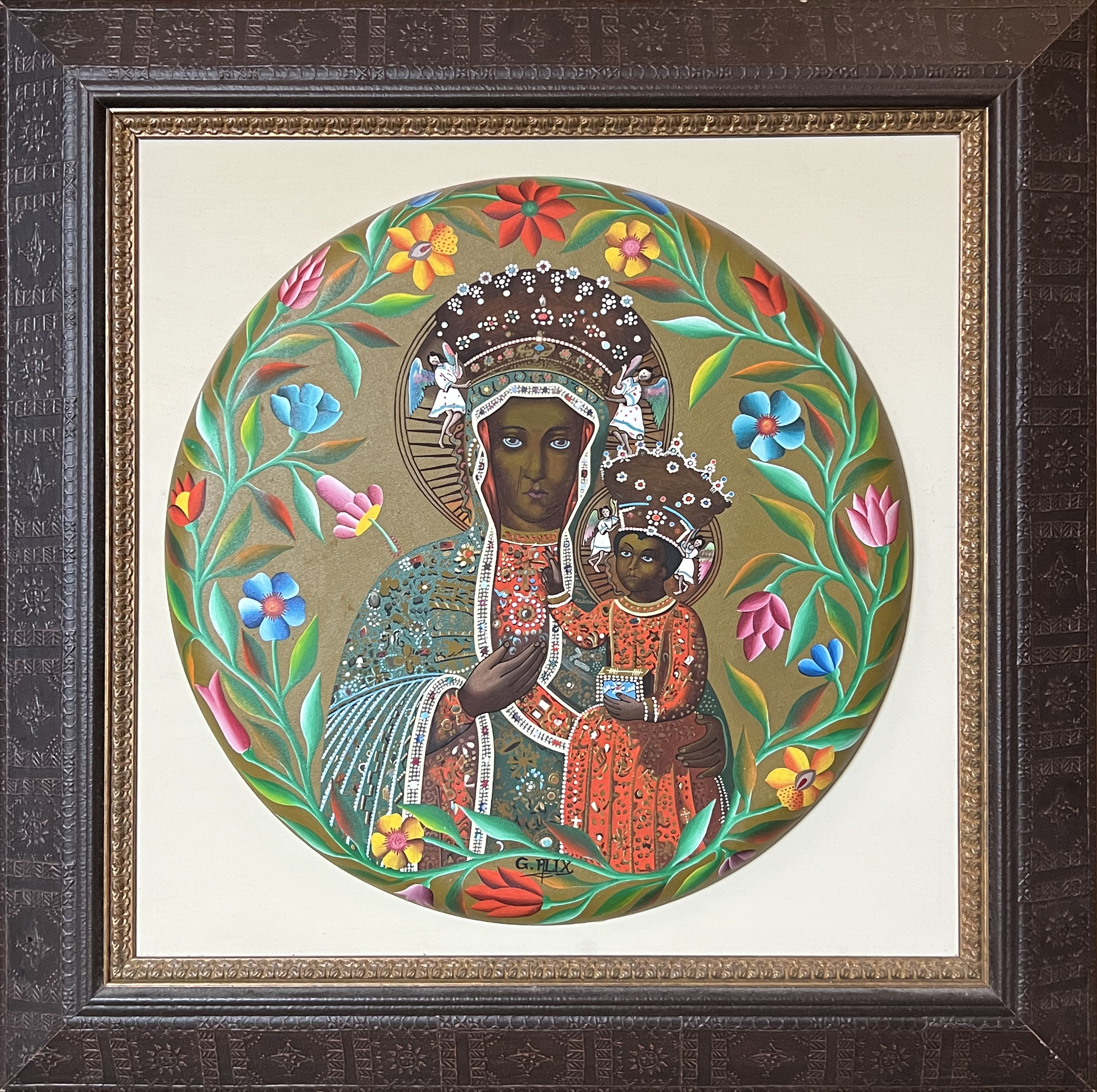 Erzulie Mapyang Erzulie MapyangGabriel Alix (1930-1998) Haiti Friends Collection |
Erzulie Mapyang is a powerful and fierce lwa (spirit) in Haitian Vodou. She is often associated with justice and revenge, particularly in cases of severe wrongs and injustices. As well, Erzulie Mapyang is a protective spirit, especially towards women and children. She is known to share in the pain of childbirth and is often invoked for her protective and nurturing qualities. Erzulie Mapyang is also recognized for her role in righting wrongs and avenging those who have been mistreated. Her presence is both formidable and compassionate, embodying the dual aspects of protection and retribution.
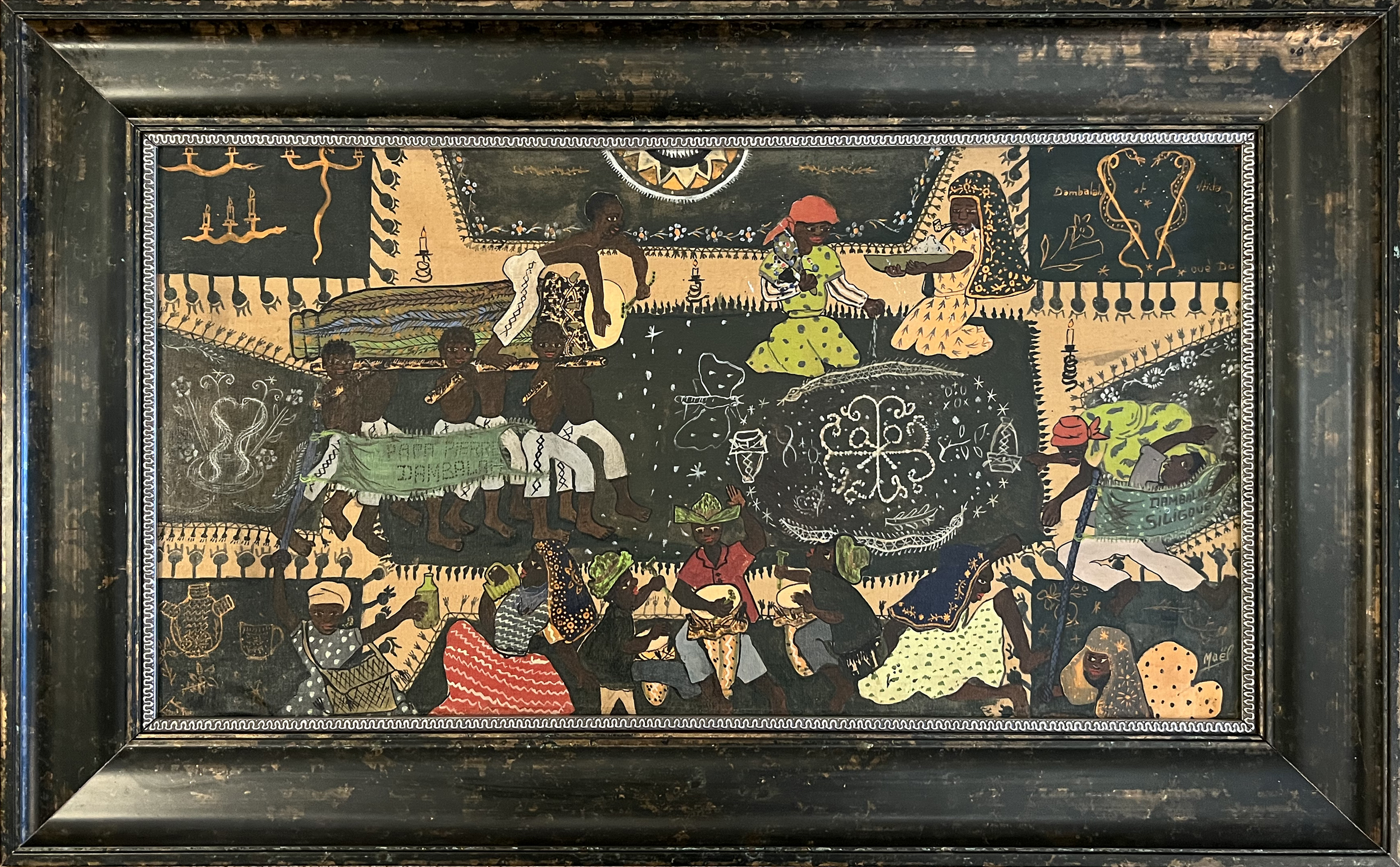 The Asòtò Ceremony (Seremoni Asòtò) The Asòtò Ceremony (Seremoni Asòtò) Ismael Saincilus, 1940-2000 Haiti Friends Collection |
The grand drum, Tambou Asòtò, stands as the pivotal instrument at the heart of Haitian Vodou rituals. This drum emits resonant bass sounds that lay the rhythmic groundwork for sacred ceremonies. Adherents of Vodou revere Asòtò’s sonorous beats for their ability to forge a conduit between the tangible and the ethereal. During these spiritual gatherings, adept percussionists employ the Asòtò to play intricate beats that beckon and converse with the spirits. Historical accounts also suggest that the Asòtò drums once served as a means of long-distance communication among the enslaved, playing a strategic role in the revolutionary struggle that culminated in Haiti’s independence in 1804.
Sequin Banners
Sequin-covered banners are one of Haiti’s most spectacular art forms, deriving from a blending of traditional African religions with the Catholicism of their former masters. The banners are traditionally the work of practicing priests and their followers. Each flag depicts the symbol or image of the spirit to which it is devoted. They are displayed in sanctuaries and carried in ceremonies. A full-size banner typically contains 18,000 to 20,000 sequins and may take ten days to complete.
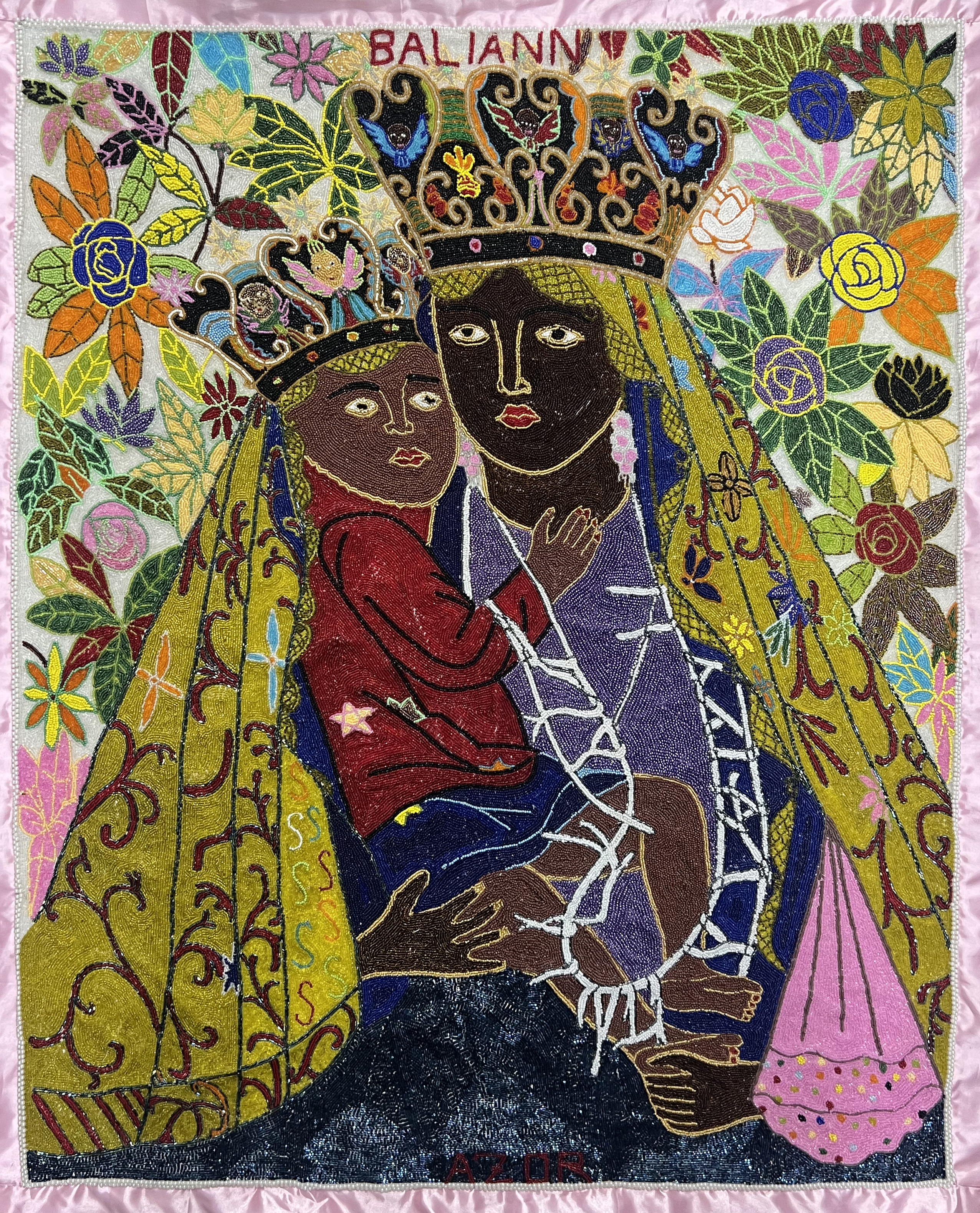 Erzulie Baliane Erzulie BalianeRoudy Azor Haiti Friends Collection |
Showing the blending of African with Catholic mother-and-child iconography, Erzulie is the Vodou lwa (spirit) of love and women. Erzulie can also appear as Erzulie Baliane, the woman who keeps secrets. She is the one to whom a petitioner can confide in confidence and receive advice about issues of love.
 Metamorphosis (Metamòfoz) Metamorphosis (Metamòfoz)Jean-Baptiste Jean Joseph Haiti Friends Collection |
This powerful scene centers around the enigmatic figure of La Sirene, the lwa (spirit) associated with the sea, who is often depicted as a mermaid-like entity with immense allure and transformative powers. Here La Sirène has lured an unsuspecting mortal into the depths of her watery domain. The enchanted individual is undergoing a profound change with his lower body morphing into a fish-like tail. In Vodou belief, this transformation represents a spiritual journey and the crossing of realms. The newly transformed being is caught between two worlds—no longer fully human, yet not entirely of the spirit realm. This liminal state reflects the Vodou concept of the crossroads, where the material and spiritual worlds intersect.
 Metamorphosis 2 (Metamòfoz) Metamorphosis 2 (Metamòfoz)Jean-Baptiste Jean Joseph Haiti Friends Collection |
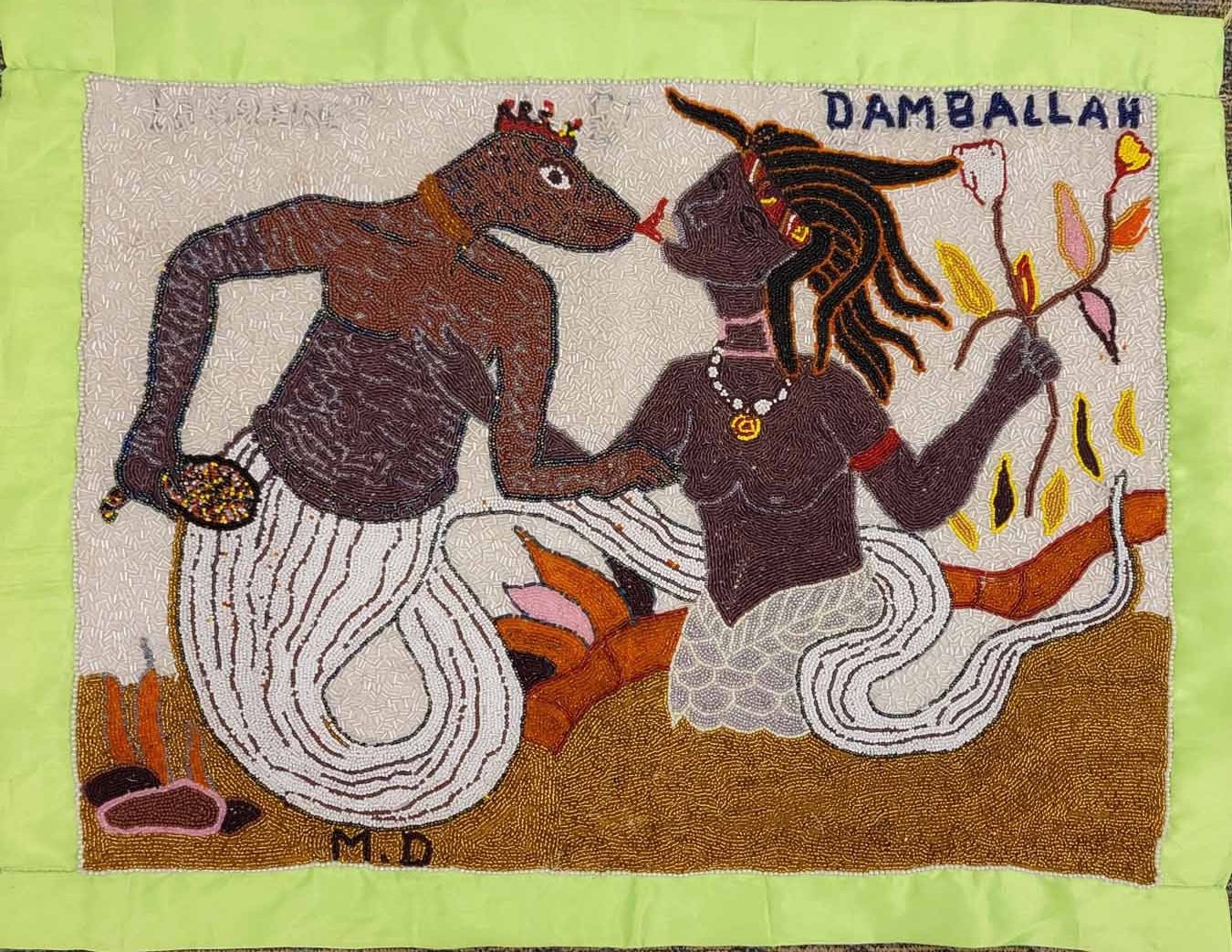 Marassa ak la Siren Marassa ak la SirenEvelyn Alcide Haiti Friends Collection |
Here we see a fascinating fusion of symbolism in the two central figures that are representations of lwa—revered spirits or deities that form the cornerstone of Vodou practice. These figures are unique interpretations of the Marasa Twins, powerful and significant presences in Vodou tradition. The lwa are portrayed with an intriguing hybrid form: the upper bodies resemble horses, while their lower halves resemble fishtails, creating a chimera-like appearance that bridges land, sea, and spirit. The horse elements reference the Marasa Twins' association with these animals symbolizes strength, freedom, and the ability to move between worlds. The fish tails introduce an aquatic aspect, alluding to La Sirèn, the mermaid-like lwa of the sea.
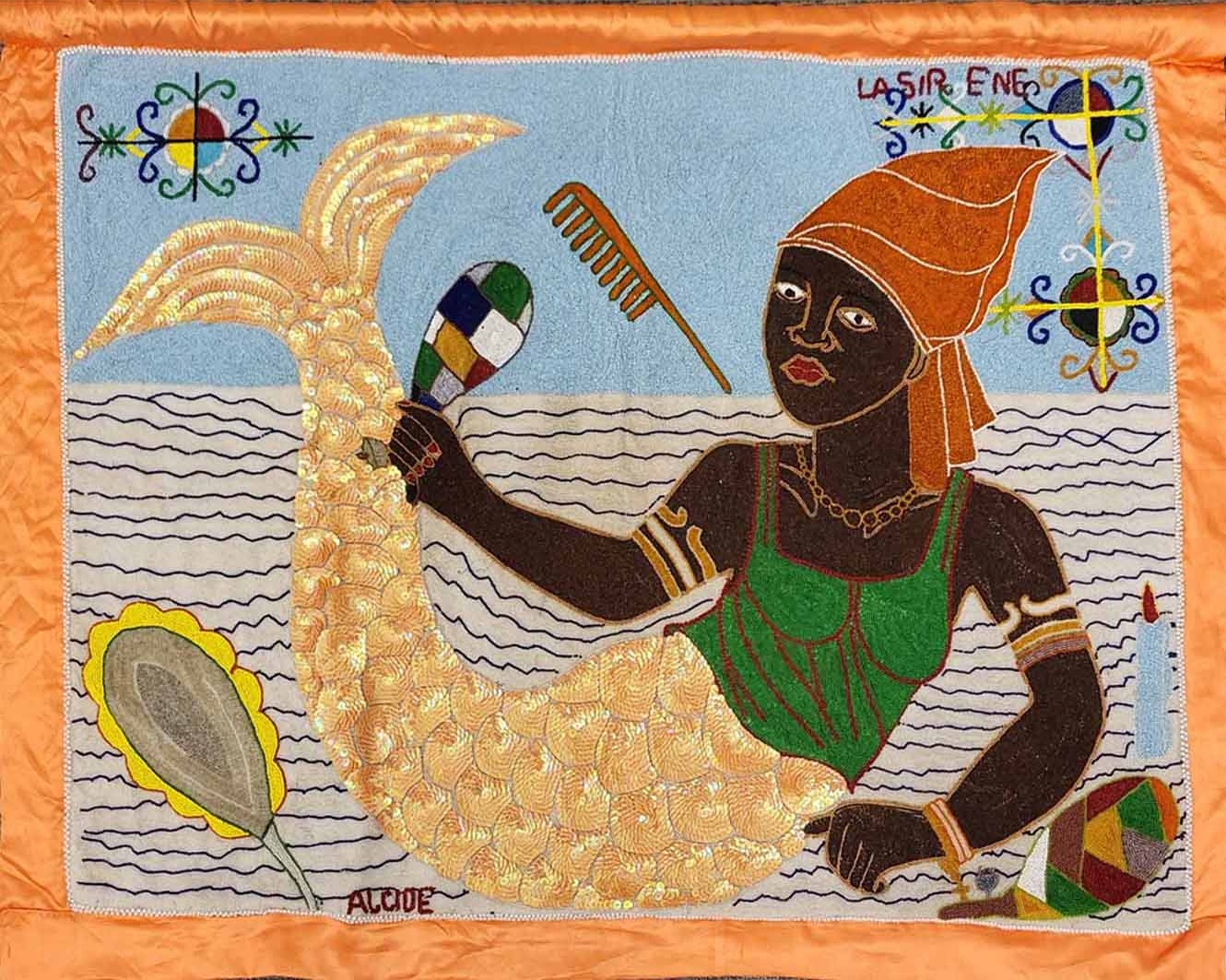 La Sirène La SirèneJean-Baptiste Jean Joseph Haiti Friends Collection |
La Sirène (Lasirenn or Mami Wata) is a powerful lwa (spirit) in the Haitian Vodou pantheon. She is typically depicted as a mermaid or water spirit, embodying the dual nature of water—both life-giving and potentially dangerous.
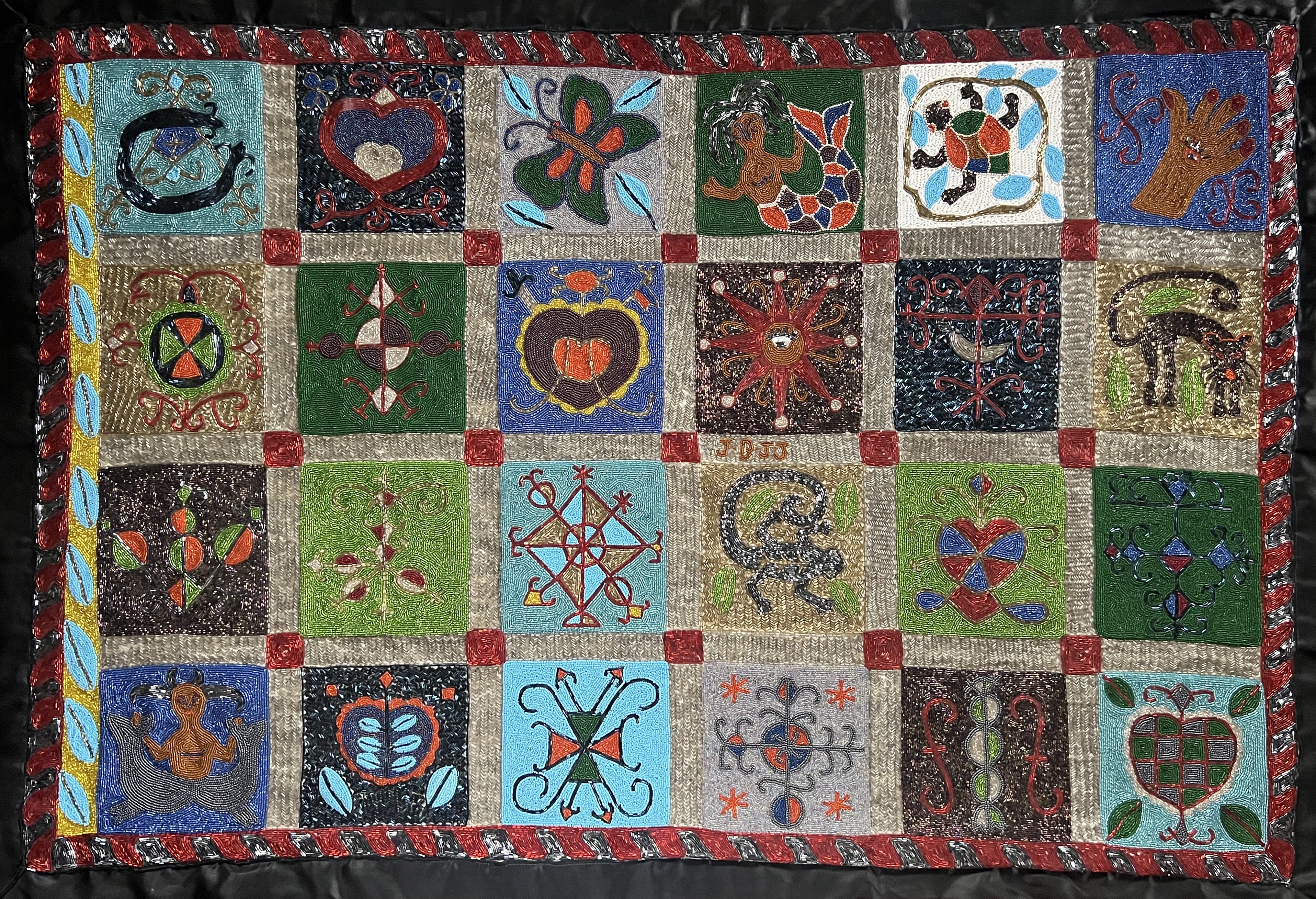 Vodou flag (Drapo Vodou) Vodou flag (Drapo Vodou) Jean-Baptiste Jean Joseph Haiti Friends Collection |
Each section of this intricate textile flag features different symbols. This flag stands as a remarkable example of how spiritual beliefs can be transformed into tangible, visually arresting art.
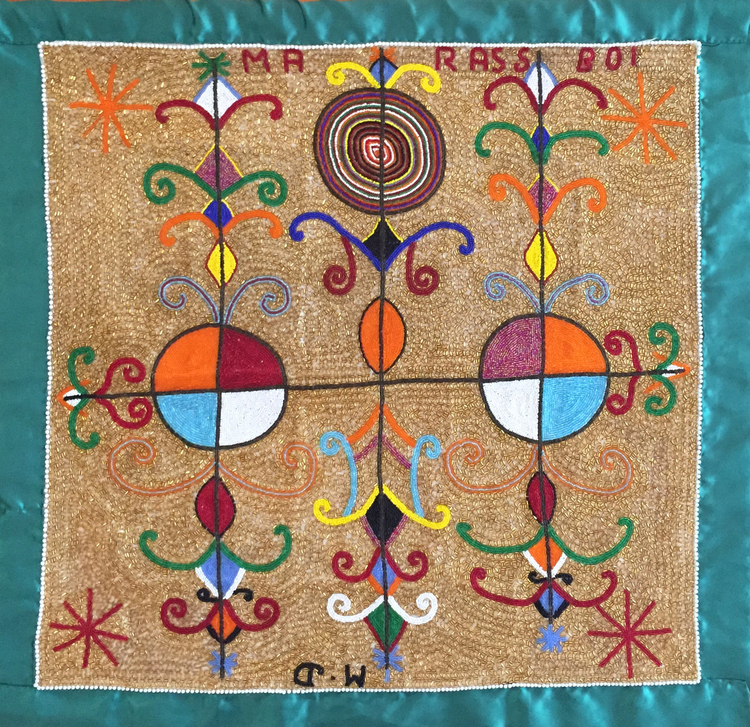 Guardian of the Gates (Papa Legba) Guardian of the Gates (Papa Legba)Mireille Delice (Delismé) Haiti Friends Collection |
The religious symbol (veve) on this Vodou flag represents Papa Legba, the guardian of the gates and the spirit who facilitates communication between the human and spirit worlds. The central cross-like figure and intricate designs symbolize Legba’s role as the barrier between the two realms. The presence of stylized serpents and other symbols further emphasizes his importance in Haitian Vodou rituals and ceremonies.
 Vodou flag (Drapo Vodou) Vodou flag (Drapo Vodou)Jean-Baptiste Jean Joseph Haiti Friends Collection |
Resistance Art
Atis Rezistans (Resistance Art) is a striking artistic form that uses found and recycled materials to create fantastic and interesting ornate sculptures. Mainly produced by self-taught artists, the sculptures are often challenging or disturbing to see but reflect the need to create art in difficult circumstances.
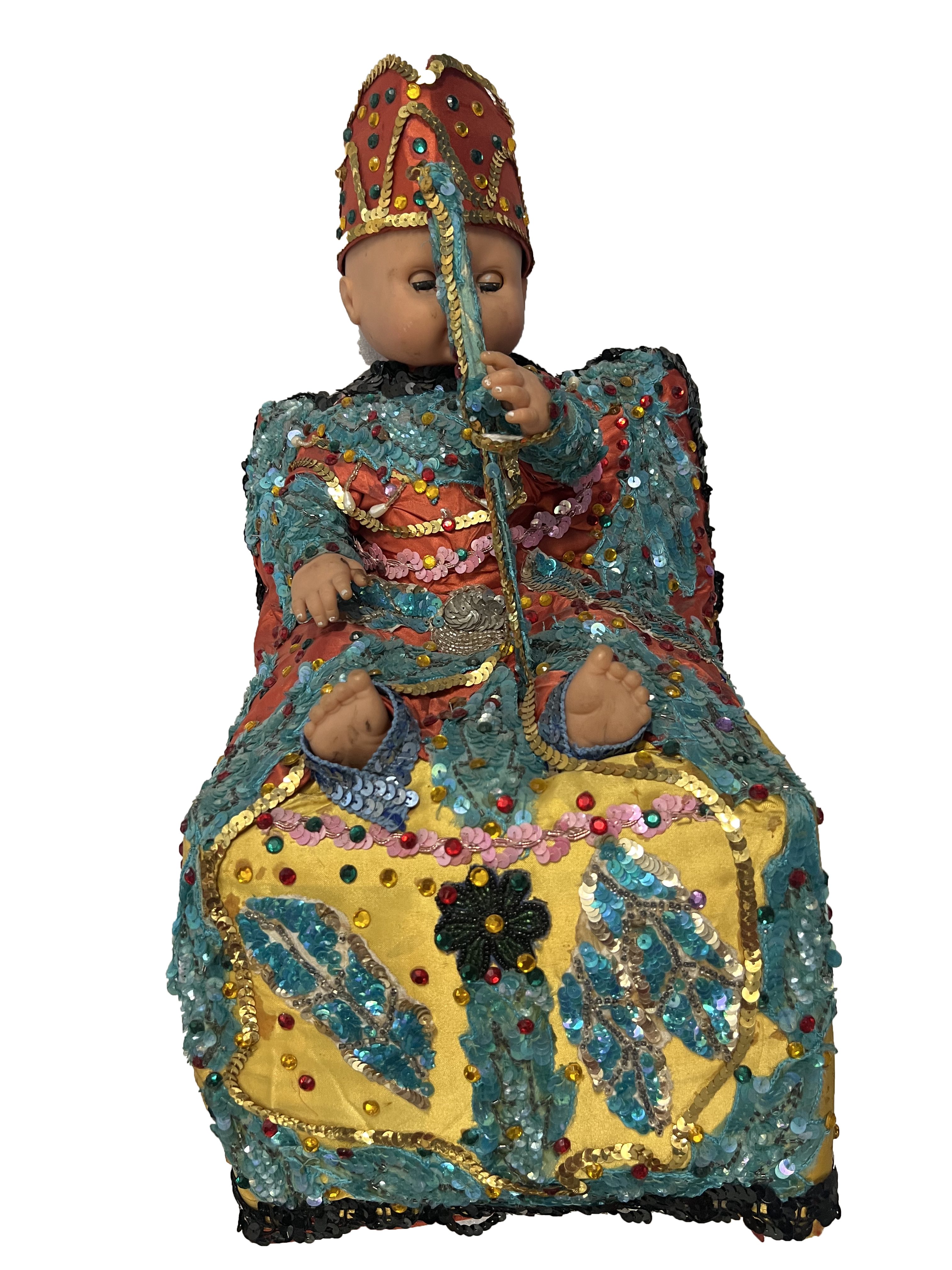 Ti Jean Danto Ti Jean DantoPierrot Barra (1942-1999) Haiti Friends Collection |
This sculpture is a representation of “Ti Jean Danto,” a revered figure in Haitian Vodou, captured in a state of deep meditation. The figure's posture conveys authority and serenity, reflecting the dual nature of many Vodou spirits as powerful entities and accessible guides. The sculpture's attire is a visual feast, with elaborate garments created in a vibrant blue, red, and gold palette. These colors are not merely decorative but deeply symbolic in Vodou tradition. The intricate beadwork, sequins, and patterns adorning the garments demonstrate the meticulous craftsmanship involved in creating ritual attire for Vodou ceremonies.
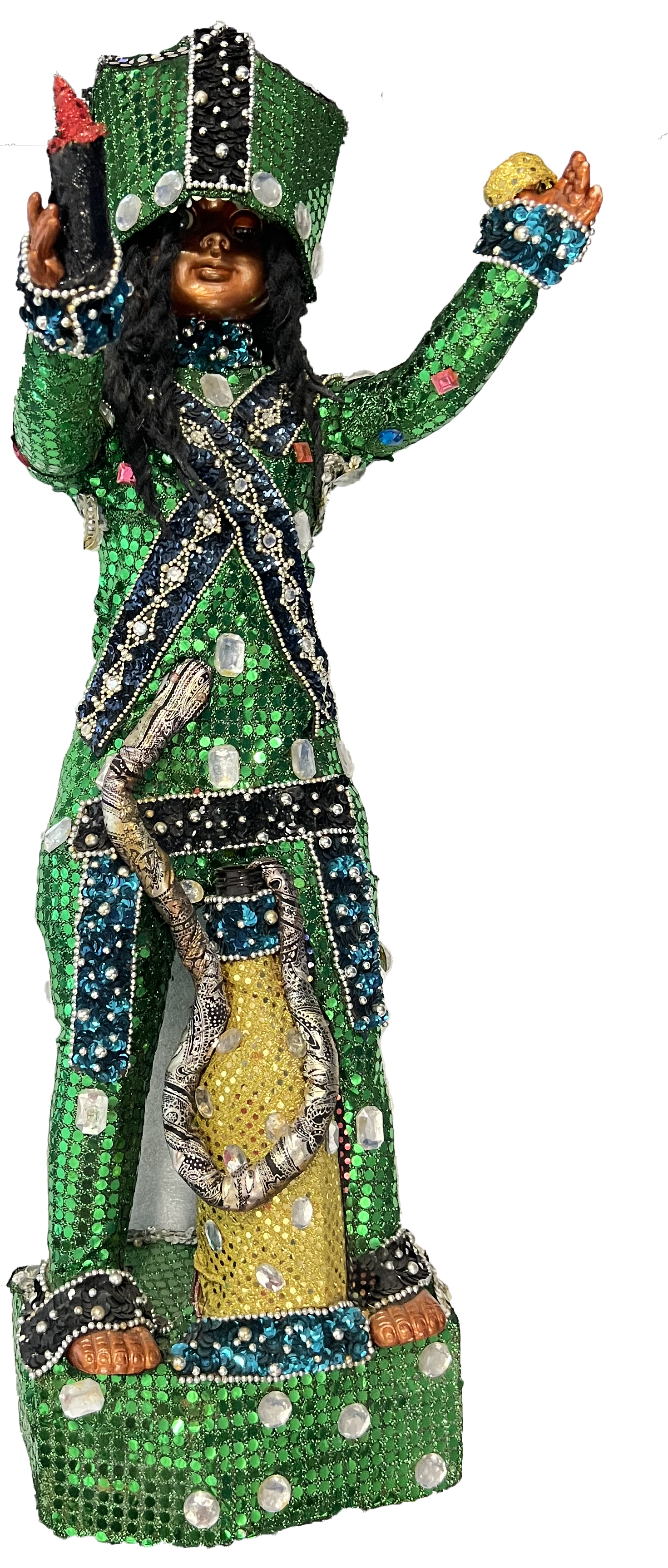 Damballah DamballahArtist unknown Haiti Friends Collection |
This sculpture presents a captivating interpretation of Damballah, a significant deity in Haitian Vodou. Traditionally depicted as a serpent, Damballah is intimately linked with creation and life forces. The artist has reimagined this deity in an upright, anthropomorphic form, merging traditional symbolism with modern artistic expression.
The vibrant green, white, and yellow colors reflect Damballah’s connection to nature, fertility, and cosmic energy. Intricate patterns cover the sculpture, symbolizing the complexity of creation and the scales of Damballah’s serpent form. In its left hand, the sculpture holds golden bracelets, representing fertility, wholeness, or the cyclical nature of existence. These bracelets also symbolize the world itself, reinforcing Damballah’s status as a creator deity.
 Bosou Criminel Bosou CriminelArtist unknown Haiti Friends Collection |
This sculpture powerfully represents “Bosou Criminel,” a formidable war deity in the Vodou pantheon. The artist has ingeniously crafted the piece in the form of a cross, blending traditional Vodou symbolism with Christian iconography, a common syncretic practice in Haitian spiritual art. At the heart of the sculpture, where the vertical and horizontal pieces intersect, lies a mesmerizing face covered in blue and green beads. This intricate beadwork serves as the piece's focal point, drawing the viewer's gaze and evoking a sense of the deity's penetrating presence. The use of blue and green symbolizes Bosou Criminel's connection to both sky and earth or his influence over life and death.
Two red daggers tied across the horizontal piece form an 'X' shape underneath the beaded face, adding a dramatic element to the sculpture. Red is associated with blood and war in Vodou symbolism, reinforcing Bosou Criminel's role as a war god. The 'X' formation represents the crossroads, a significant spiritual location in Voodoo's belief. It also serves as a warning sign, hinting at the deity's dangerous nature.
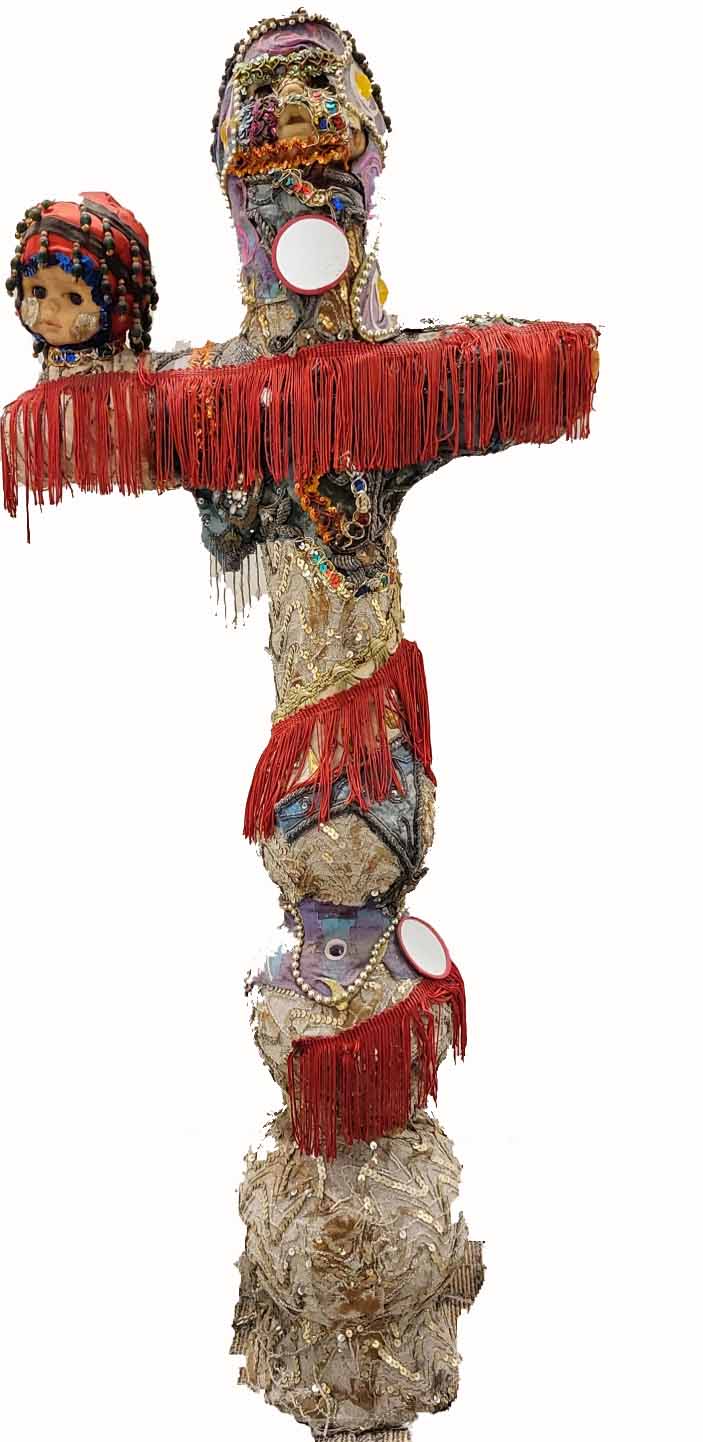 Crossroads (Kafou) Crossroads (Kafou)Pierrot Barra (1942-1999) Haiti Friends Collection |
This cross is adorned with various materials, including beads and fabrics. It represents the meeting point between the tangible world and the realm of spirits. A striking red section dominates the middle of the work, possibly symbolizing vitality, spiritual energy, or the presence of unseen forces. The artist's use of recycled and found objects in the creation speaks to the ingenuity often seen in traditional practices where creativity flourishes even with limited resources.
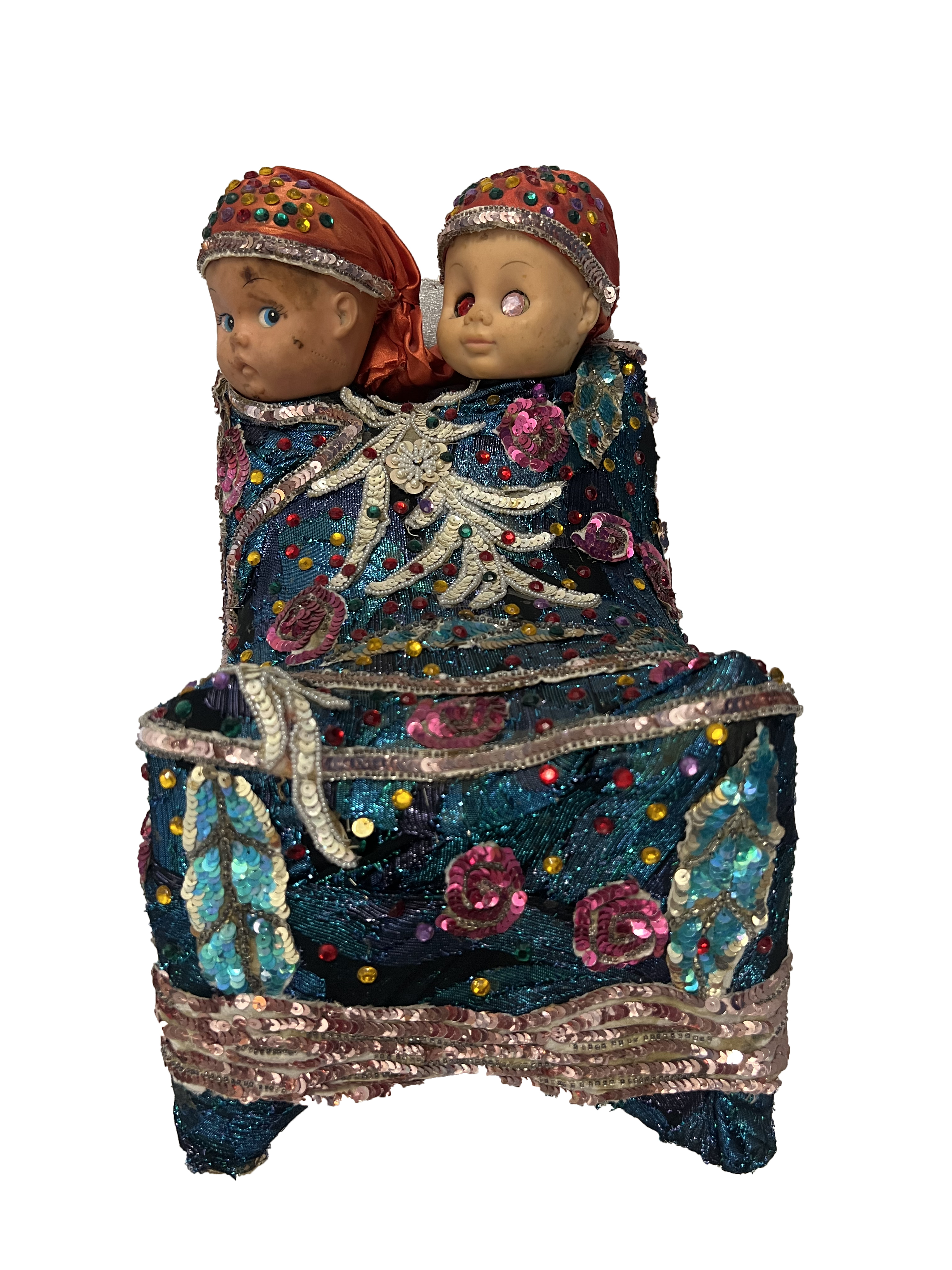 Marasa Dosu Dosa Marasa Dosu DosaPierrot Barra (1942-1999) Haiti Friends Collection |
This striking sculpture embodies the essence of Marasa Dosu Dosa, the revered divine twins in Haitian Vodou. The artist has masterfully captured the complex duality and unity of these powerful spirits. The two figures are seamlessly joined at the torso, a physical manifestation of their spiritual interconnectedness. This fusion symbolizes the inseparable nature of the Marasa, who are believed to possess heightened spiritual power due to their twinned existence.
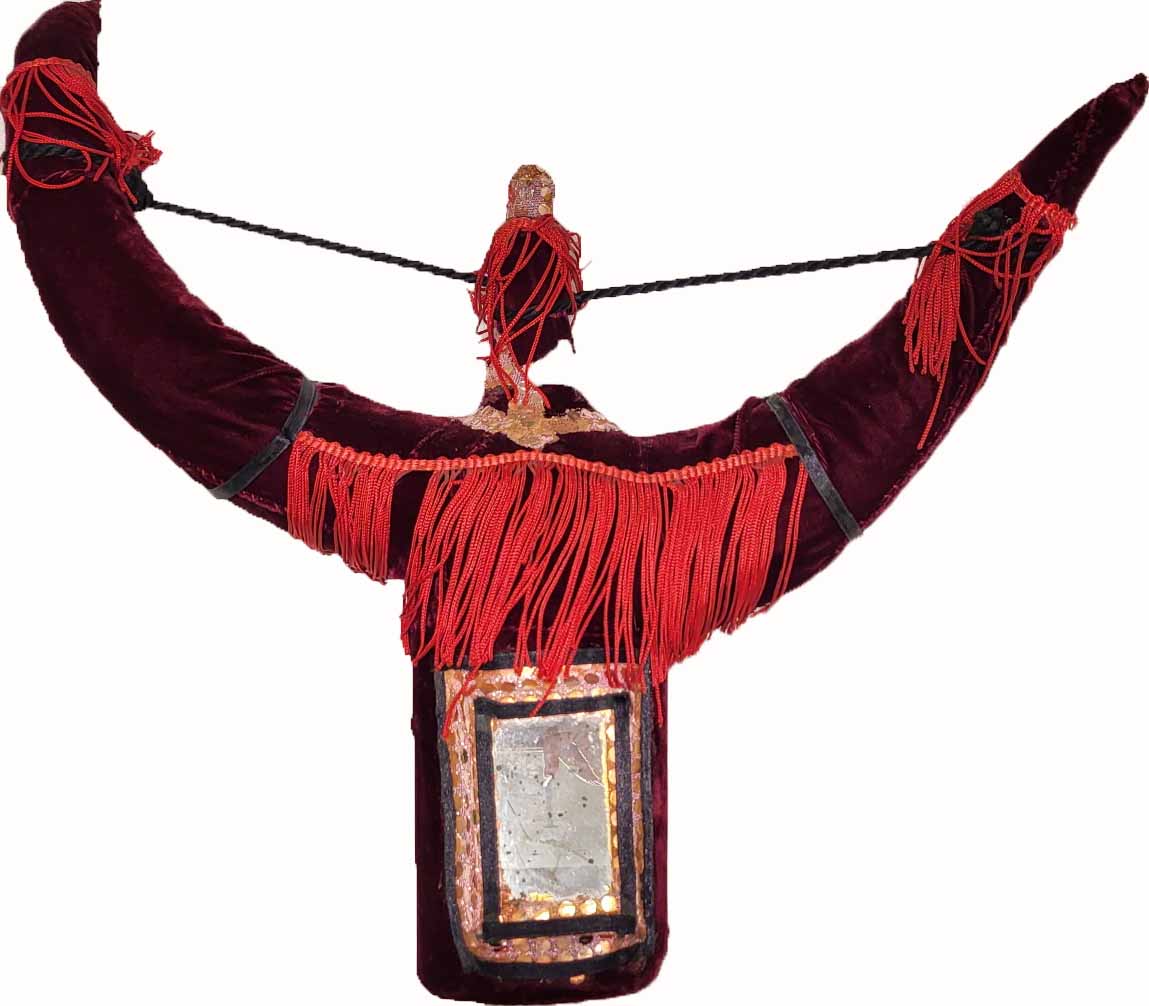 Warrior Spirit (Ogou) Warrior Spirit (Ogou)Unknown Artist Haiti Friends Collection |
This bottle wrapped in a striking combination of red and black fabric is a tribute to Ogou, a powerful spiritual entity revered as a guardian and warrior figure in Haitian tradition. The vibrant red fabric evokes notions of strength, energy, and life force, while the black elements introduce an air of mystery and otherworldliness. The fabric’s arrangement creates wing-like forms around the bottle and suggests a protective and commanding presence. The artwork beautifully illustrates how everyday items can be transformed into potent spiritual symbols.
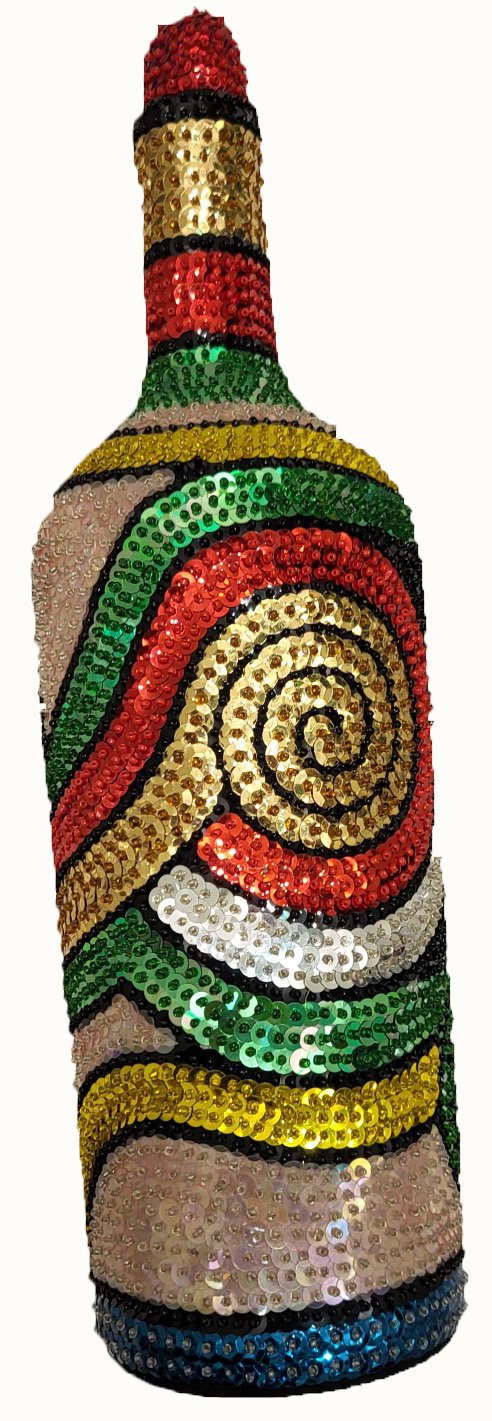 Sequined Spirit Bottles Sequined Spirit BottlesUnknown Artists Haiti Friends Collection |
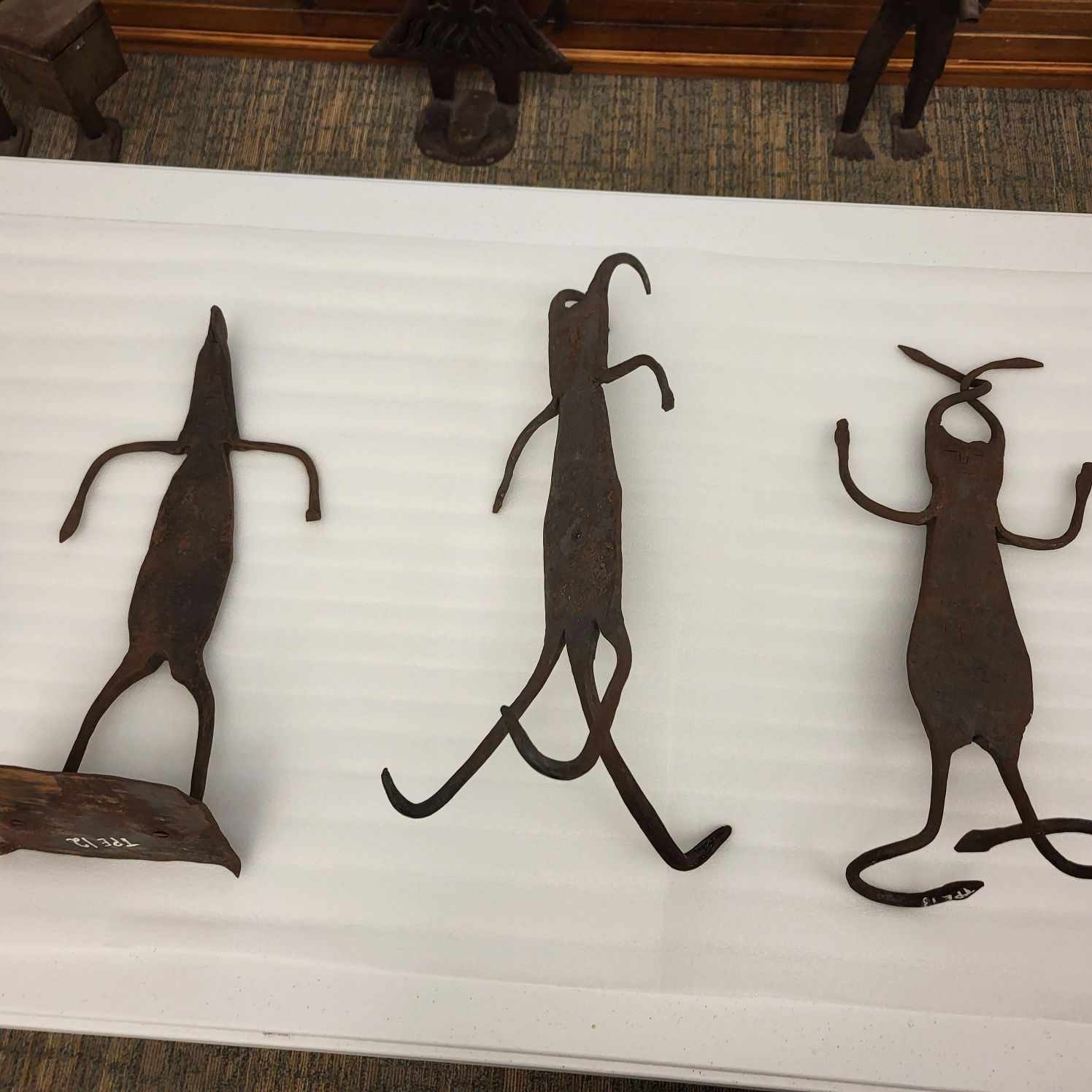 Vodou Figures Vodou FiguresThomas Petit and Pierre D. Petit Haiti Friends Collection |
Mermaids
La Sirène (the mermaid) figures prominently in Haitian folklore and art. Mermaids are Vodou spirits connected with the ocean, and as in European and American portrayals, usually depicted as half-human, half-fish. Mermaids have long appeared in stories from many African nations and cultures. In Haiti, they are considered powerful spirits with healing powers and are often called upon to cure illnesses. They are also thought to be able to bring good luck to those who honor them.
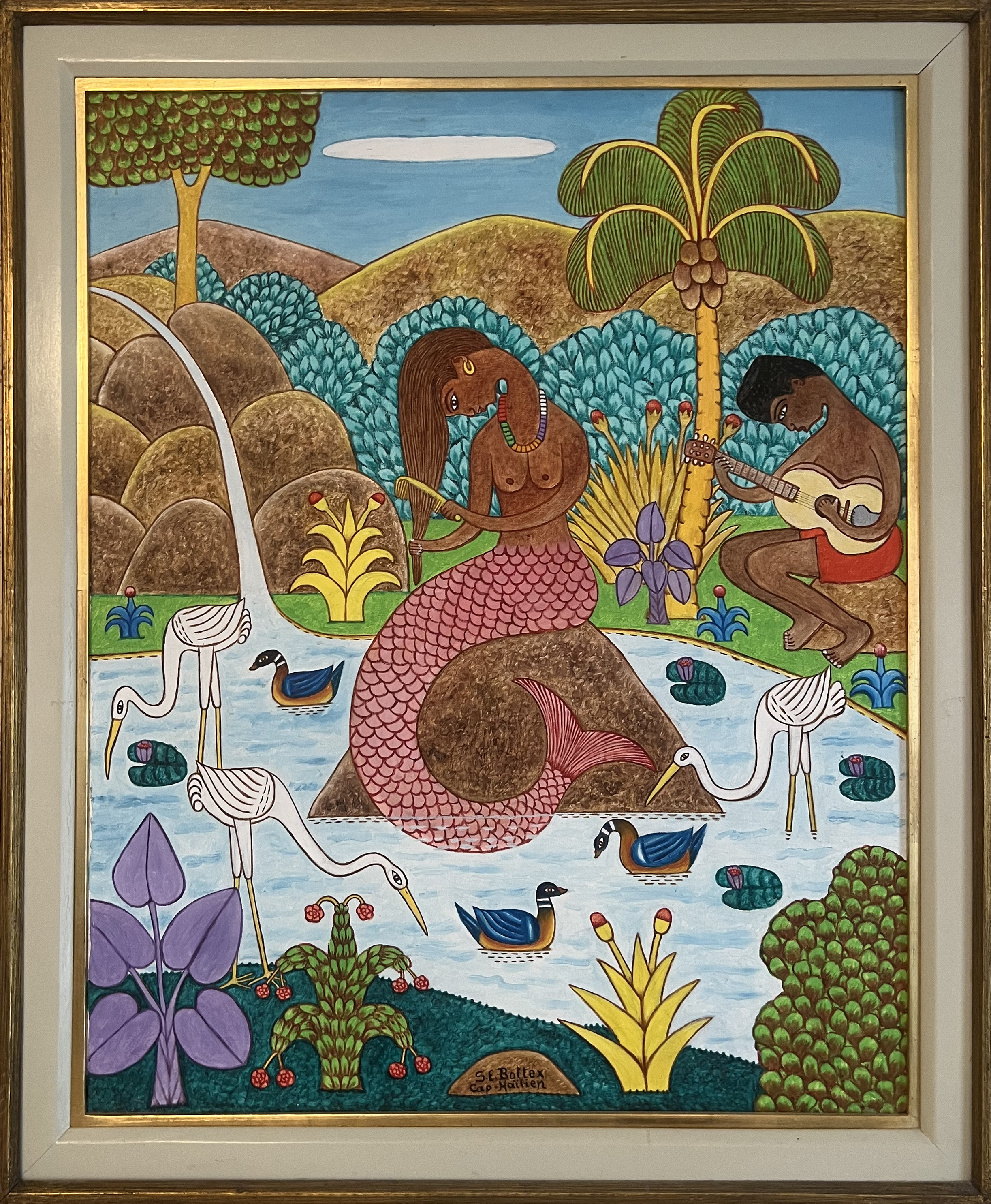 The Sirèn's Courtier (Koutisan la Sirèn) The Sirèn's Courtier (Koutisan la Sirèn) Seymour E. Bottex (1922-2016) Haiti Friends Collection |
A captivating encounter between a man attempting to woo or impress a mermaid is portrayed here. The mermaid, known in Haitian Vodou as "La Sirène" or "Mami Wata," is depicted not just as a fantastical creature, but as a powerful spiritual entity. Her presence in the painting evokes the rich tapestry of Haitian folklore, where these aquatic beings are revered as formidable water spirits with the ability to bestow fortune upon those who encounter them.
 Vodou Ceremony (Seremoni vodou 21 nanchon) Vodou Ceremony (Seremoni vodou 21 nanchon)Charles Lucien Haiti Friends Collection |
Here we see a Vodou ceremony taking place in a peristil (temple), a building central to Haitian Vodou practices. The scene captures a significant event where two distinct groups are shown drawing veve (intricate religious symbols) on the ground to invoke lwa (spirits). Vodou spirituality encompasses the "21 nations" (nanchon), a concept that represents the diverse origins of the lwa, including African, Indigenous, and European influences. Each nation embodies a different group of spirits with unique characteristics.
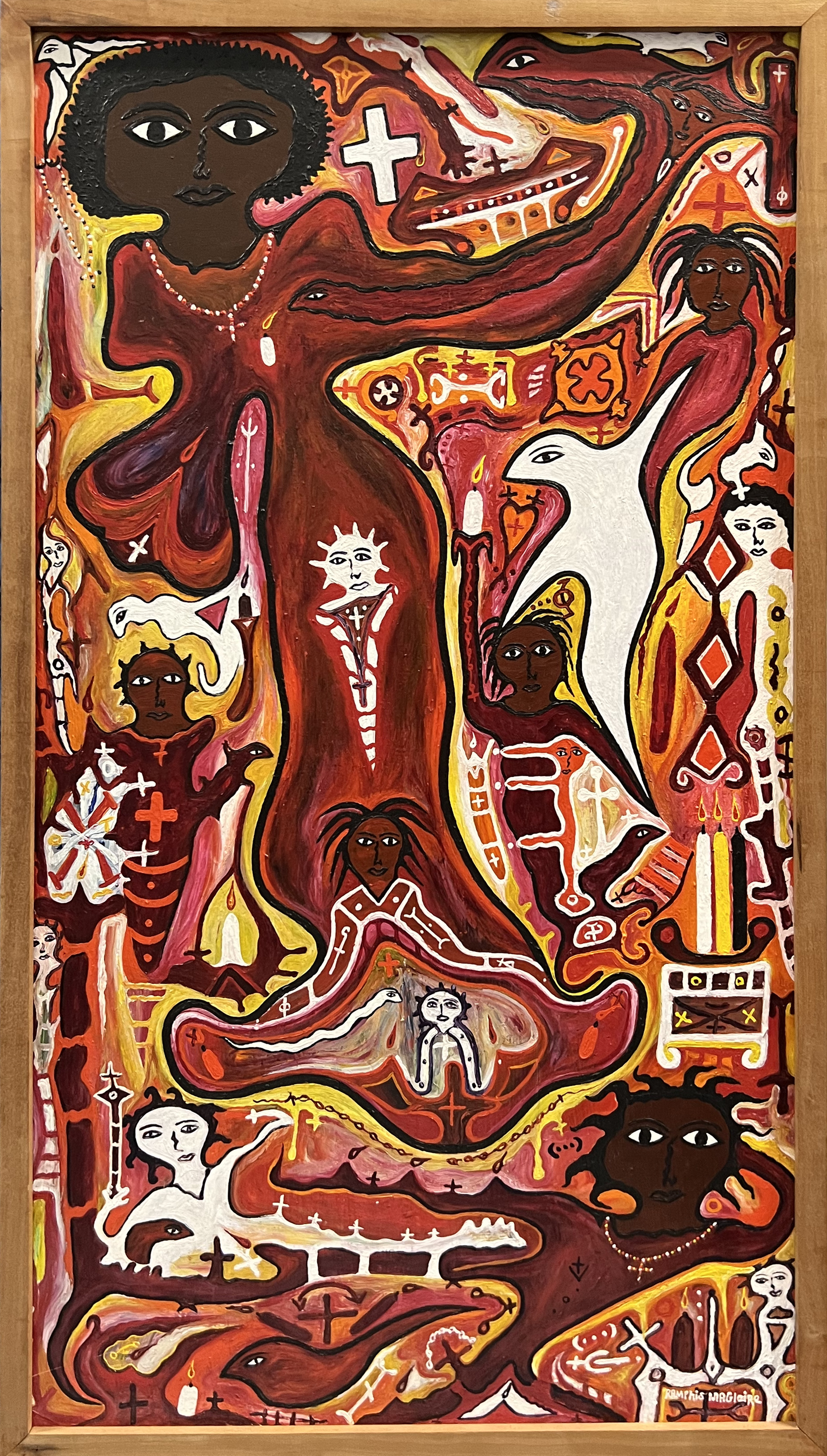 The Sun Queen (La Rèn solèy) The Sun Queen (La Rèn solèy) Ramphis Magloire Haiti Friends Collection |
La Reine Soleil (The Sun Queen) is a spirit that embodies the fusion of Indigenous and Haitian Vodou traditions. While not a widely recognized figure in mainstream Vodou pantheons, La Reine Soleil represents the enduring influence of Indigenous cultures on Haiti's spiritual landscape. The Indigenous reverence for nature spirits harmonized with African and European beliefs, thereby contributing to the rich tapestry of Vodou lwa (spirits).
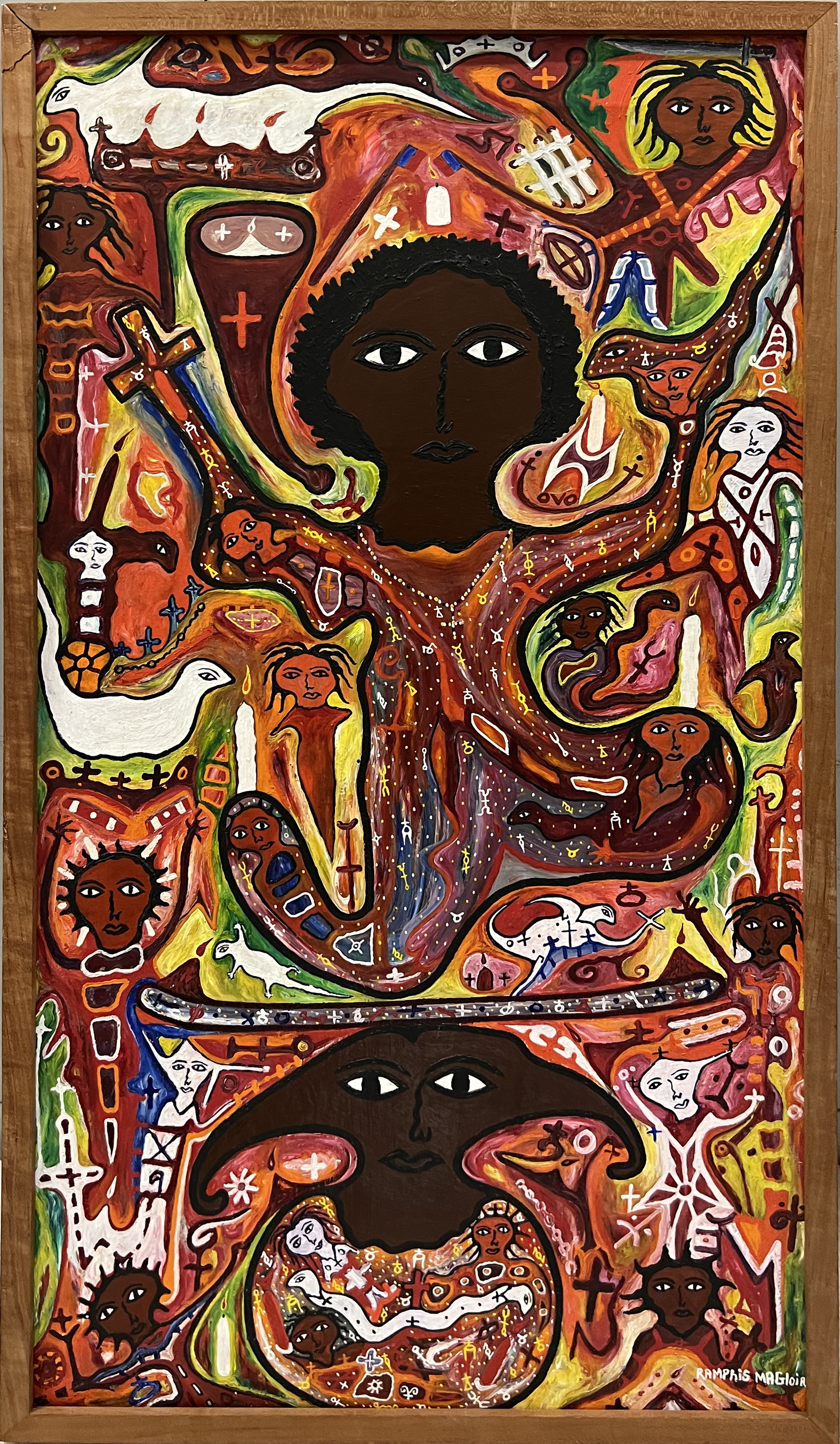 The Sun Queen with Dambala (La Rèn solèy ak Dambala) The Sun Queen with Dambala (La Rèn solèy ak Dambala)Ramphis Magloir Haiti Friends Collection |
When combining the symbolism of La Reine Soleil and Dambala (serpent god spirit), we see a powerful representation of life, creation, and the interconnectedness of all things. The sun, as a life-giving force, aligns with Dambala’s role in creation and fertility. Both symbols emphasize the importance of harmony with nature and the cyclical nature of existence.
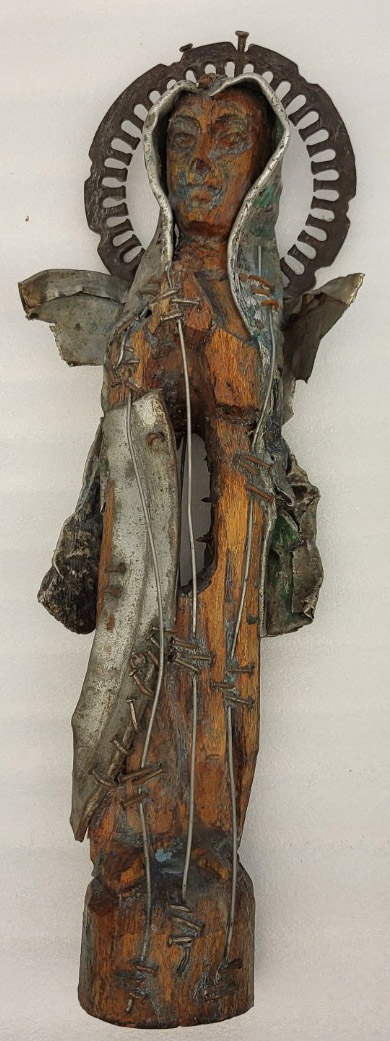 Lady Erzulie (Erzulie Freda) Lady Erzulie (Erzulie Freda) Unknown Artist Haiti Friends Collection |
This sculpture's fine details and adornments capture the essence of feminine grace and elegance traditionally linked to Erzulie Freda, a revered figure in Haitian spiritual tradition. A distinctive feature of this representation is the inclusion of a sword, which symbolizes an aspect of strength and protection not typically emphasized in portrayals of this figure. A circular, halo-like structure behind the head enhances the figure's divine status. This element underscores the profound reverence of this spiritual presence in Haitian culture.


